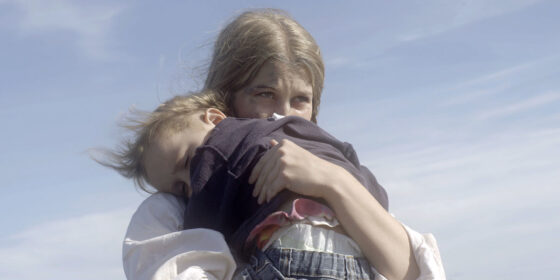The Crescent (Seth A. Smith, Canada) — Midnight Madness
By Josh Cabrita
Seth A. Smith’s perplexing and propulsive The Crescent strips away nearly all exuberance from its mise en scène and presents Nova Scotia’s naturally picturesque vistas in bleak hues. Using the anxieties of a survivalist psyche to radically realign our perception of specific tropes, Smith capitalizes on fears of economic isolation within the bounds of a scenario we’ve seen countless times. Bella and her young child Owen move to oceanfront property on Ship Harbour, 80 miles east of Halifax, immediately after the funeral of Bella’s husband. At night, drilling sounds rattle the walls, and a group of shrouded strangers gaze at their home from the edge of the tide. Whether this is happening inside or outside of Bella’s head is not important; the entire landscape has become the embodiment of a universal fear: “Once you’re here, it’s hard to leave.” Surrounded by water on all sides and an ocean view that stretches beyond the horizon, this is as much a psychoanalytical study of life in a marginalized region as it is a claustrophobic thriller.
The generations within the film fit a broader allegorical reading. When Bella vanishes for a good portion of the mid-section, the camera crawls along with the toddler as he tosses his toys in a clothes dryer, drops and breaks a porcelain mug, and wheels around a plastic ambulance near a dangerously high flight of stairs. For what seems like days, Owen navigates the hazards of the house alone, finally ventures outside, then plants himself in the rubble of a condemned building. It’s a striking image: the epitome of hope and innocence enveloped by decay and the bland grey of the overcast sky. If the toddler protagonist wasn’t a clear enough indication, this image establishes the unambiguous stakes for Owen and everyone else: get to the mainland, or risk dying with everything else.
Josh Cabrita


